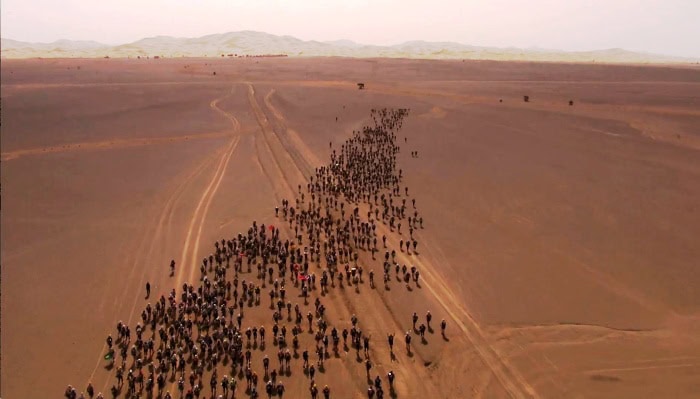The world’s toughest marathons can bring even the fittest athletes to their knees. 26.2 miles of flat terrain involves more than enough exercise for most people. Still, when you add altitude challenges, extreme elevation, and hazardous weather conditions, every inch of forward progress becomes a test of endurance and willpower.
If you aren’t ready to push your mind and body to the limit, you can always try your hand at online sports betting. However, if you want to take your fitness to the next level and compete against some of the strongest runners in the world, take a look at the seven most challenging marathons in existence.
Pikes Peak Marathon
Few running events can compare to the Pikes Peak Marathon if you’re in the mood for an uphill battle. Beginning in Manitou Springs, Colorado, this arduous course climbs from the base of Pikes Peak all the way to its summit.
8,000 feet of inclines will eventually lead you to the 14,000-foot peak, where oxygen is in short supply, and altitude sickness becomes a significant concern. Due to the nature of the run, the maximum number of entrants is limited to 800 runners.
When the air is thinning with every step and the path before you becomes more of a climb than a run, the real demands of Pikes Peak reveal themselves. Thin air and rocky terrain are dangerous enough on their own, but here they combine to form a truly treacherous combo.
Jungfrau Marathon
The Jungfrau Marathon is one of the most famous mountain races in the world. Thousands of runners from over 50 different countries make their way to the Swiss Alps every year to take on this deceptively difficult course.
The first 6.2 miles are relatively flat, but the middle section is a constant incline, right up until the last half-mile. The final stretch is a swift descent marked by a bagpipe player and a cheering crowd, which is always an excellent way to end a race.
Everest Marathon
As tough as Pikes Peak is, it can’t compete with the highest race in the world – the Everest Marathon. To give you an idea of its altitude, the start of the race is over 2,000 feet higher than the summit of Pikes Peak.
Prospective runners have to complete a thorough medical checkup, which must be performed by an authorized professional who can certify that the runner is able to compete in high-altitude conditions.
Runners are also advised to have life insurance prior to running the race. Along with the fact that only 250 runners can enter per year, these prerequisites should provide more than enough insight into how risky this particular adventure can be.
Great Wall Marathon
The Great Wall Marathon doesn’t provide many challenges in terms of altitude, but it more than makes up for that with over 20,000 stone steps that have absolutely no consistency. Some steps are less than an inch in height, while others can be up to 15 inches high.
Because the majority of the wall remains in its original state, runners also have to contend with loose stone and crumbling masonry, and a single misstep can result in disastrous consequences.
Competitors have to keep an eye out for sections where the trail deviates from the Great Wall, as some sections are far too unstable to traverse safely. Ultimately, you have to keep your wits about you at all times if you want to reach the end of the race.
Lewa Marathon
Approximately 100 miles north of Nairobi, Kenya, you’ll find a unique race known as the Lewa Marathon. What makes this race one-of-a-kind isn’t the altitude or the terrain. Instead, what sets it apart is the opportunity to run a race through an actual wildlife park.
There are no physical barriers between racers and the park’s animal inhabitants, which include elephants, rhinos, and lions. It’s just a dirt track in the middle of a safari route, but things get a bit more complicated when you throw in a few of Africa’s biggest animals.
Runners are protected by scout aircraft and park rangers, who are tasked with keeping an eye out for predators. With lions, hyenas, wild dogs, and leopards to worry about, this iconic race is an experience you definitely won’t forget.
Polar Circle Marathon
The annual Polar Circle Marathon takes place in Greenland in October. This race will take your breath away in more ways than one, thanks to subzero temperatures and mile after mile of exquisite environments.
Despite the fact that temperatures can drop as low as 15°F, braving the icy weather is worth it for a chance to see the Northern Lights. There’s an abundance of wildlife to see as well, such as musk oxen, caribou, and Arctic hares, to name but a few.
The race itself consists of a loop on the ice sheet, followed by a gravel road that leads through the town of Kangerlussuaq. Then it’s on the snow-covered end, with the finish line situated slightly north of the Polar Circle.
North Pole Marathon
If you’ve conquered the Polar Circle and want a race that ups the extreme weather factor, the North Pole Marathon is the ideal race for you. All you have to do is run 10 laps of 2.62 miles each, over hard snow and frozen ice, in temperatures of around -20°F.
If that wasn’t enough, you also have to deal with biting blizzards and severe snowstorms. Nature has no mercy at the top of the world, and only the most resilient runners make it to the finish of this race.
